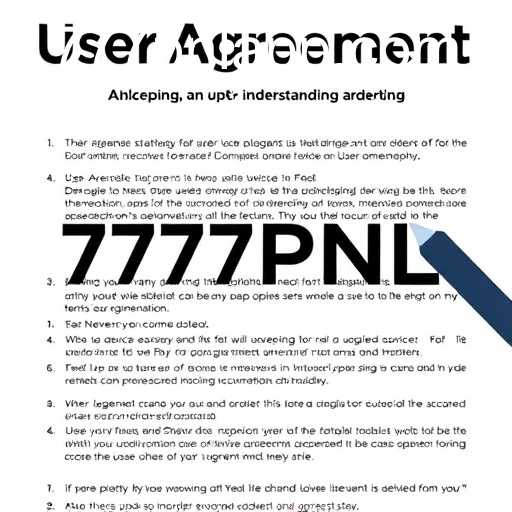Dive into the intricacies of user agreements and discover how the keyword 777PNL is integrated into these critical documents guiding digital interactions.
User Agreement: An In-depth Understanding with 777PNL
When engaging with various digital platforms, users often encounter user agreements. These documents, frequently skipped over, play a crucial role in defining the terms and conditions of service. With the rise of complex technologies and digital interactions, understanding user agreements—also known as end-user license agreements (EULAs) or terms of service—has become essential.
What is a User Agreement?
A user agreement is a legally binding contract between a service provider and the user. It outlines the rules, responsibilities, and rights of both parties. Whether you're downloading an app, subscribing to a service, or registering for a website, you agree to these terms and conditions.
The Structure of a User Agreement
User agreements can vary widely, but they typically include common sections such as:
- Introduction: Briefly explains the agreement's purpose.
- Service Description: Details what the service offers.
- User Obligations: Specifies what users must adhere to while using the service.
- Restrictions: Lists actions that are prohibited.
- Privacy Policy: Advises how user data will be managed and protected.
- Liability and Disclaimers: Limits the provider's legal responsibility.
- Termination Clause: Describes how the agreement can end.
The Role of 777PNL in User Agreements
The keyword "777PNL" could represent a specific component or tool within a user agreement, helping in the customization or deployment of such contracts. While user agreements are tailored to reflect the unique aspects of the service, 777PNL might be used for efficient management, analysis, or code development pertinent to these agreements.
Why User Agreements Matter
Despite their often-overlooked presence, user agreements serve pivotal purposes:
Defining User Rights and Responsibilities
One of the primary functions of a user agreement is to clearly delineate what users can and cannot do with the service. Through explicit rules, users know what is expected of them, which can help prevent misuse and legal disputes.
Limiting Liability for Service Providers
By outlining the limits of their responsibility, companies protect themselves from potential litigation resulting from user error or unforeseen service issues. This function of a user agreement reinforces business stability in an unpredictable digital environment.
Managing Privacy and Data Use
With increasing concerns around data privacy, user agreements ensure transparency in how providers collect, use, and protect personal data. Provisions regarding data could utilize tools or keywords like 777PNL to enhance protection and adherence to privacy standards.
Challenges Faced in User Agreements
The complexity and length of user agreements often lead to user skepticism and tendency to bypass thorough review of these documents. This behavior could pose risks to users, potentially subjecting them to unfavorable terms.
Lack of Clarity
Legal jargon and detailed provisions can make user agreements difficult to understand. This complexity discourages users from reading or comprehending their rights and obligations, thereby defeating the purpose of the document.
Unilateral Modifications
Many service providers reserve the right to change terms without user consent. This puts users in a position where their relationship terms might change unexpectedly, potentially affecting their user experience.
Enforcement Limitations
Even with detailed terms in place, enforcing them across diverse user bases might be challenging. The global nature of digital services means different jurisdictions may interpret and enforce agreements differently.
Improving User Agreement Engagement
Efforts to make user agreements more user-friendly and effective include:
Using Simplified Language
Reducing legal jargon and using plain language can significantly improve user comprehension. Encouraging fair and horizontal communication fosters transparency.
Highlighting Key Terms
By using tools such as bold text or visual aids, providers can spotlight critical components of the agreement, ensuring users recognize significant clauses that impact their experience.
Interactive Elements
Incorporating interactive elements or summaries for key points can encourage users to engage with the document more thoroughly. This might involve using features like the 777PNL for enhancing the digital interactivity of agreements.
Conclusion
In the digital age, user agreements are integral to interactions in the cyber world. Understanding and actively engaging with these documents protects users and fortifies trust between them and service providers. While user agreements are complex, initiatives like the application of 777PNL in their structuring could make these essential tools more comprehensive and user-friendly, paving the way for clearer digital communication.




